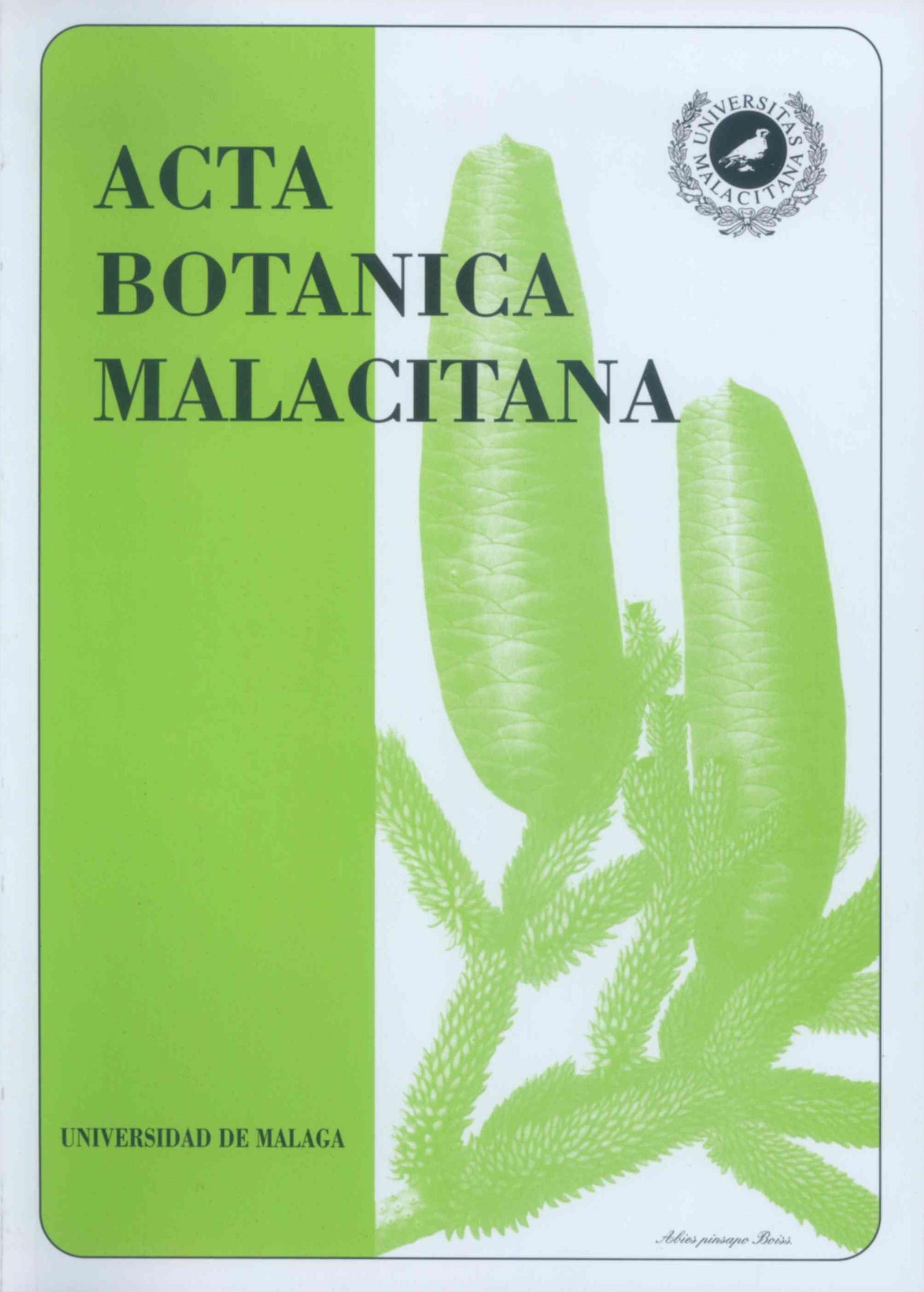Comparative mophological study of Verrucaria maura y V. amphibia in the Basque Coast
DOI:
https://doi.org/10.24310/abm.v16i.9155Keywords:
Morphology, variability, spores, VerrucariaAbstract
Morphological variability in Verrucaria mania and V. amphibia is studied from populations living in the Basque Coast (N-Spain). Five different phenotypes are recognized, two of them belonging to V. amphibia (typical and type « a» 1), while the other three belong to V. maura (typical and types «m»1 and «m»2). Their morphology is summarized and compared in tables 1 and 2. Their macroscopic habit is shown in figs. 1-5.
The most constant characters, hence the most suitable to distinguish between the two species, are the border of the thallus, wich is abrupt and without hypothallus in V. amphibia while it is thin and has a clear hypothallus in V. mania, and the size of spores, constantly broader in V. matra. All other morphological characters are far more variable and less useful for discrimination. The main variability found in V. mania is related with the relative level occupied by the specimens in the coast, while that found in V. amphibia is probably related with the degree of insolation.
One of the phenotypes of V. mania, t. «m»2, is in uncertain posit ion for the momem, as it appears to be intermediate between the two species.
Downloads
Metrics
References
CLAUZADE, G. & CI. ROUX -1985- Likenoj de okcidenta europo. Ilustrita determinlibro. Bull. Soc. Bot. du Centre-Ouest, nouv. se?r. num. spe?c. 7:1-893.
FLETCHER, A. -1973- The ecology of marine (littoral) lichens on some rocky shores of Anglesey. Lichenologist 5:368-400.
FLETCHER, A. -1975- Key for the identification of British marine and maritime lichens. I. Siliceous rocky shore species. Lichenologist 7:1-52.
ZSCHACKE, H. -1933-34- Epigloeaceae,Verrucariaceae und Dermatocarpaceae. Rabenh. Krypt. Fl. 9 (1): 44-695.
Downloads
Published
How to Cite
Issue
Section
License
All information related to the licensing of published works in Acta Botanica Malacitana and copyright can be found in our Editorial Policy.







1.png)
